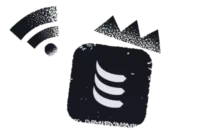What is Unicode?
Unicode is a computing industry standard that represents characters from virtually all writing systems used worldwide. It is a universal character encoding standard designed to facilitate the interchange, processing, and display of text in different languages and scripts.
Traditionally, different character encoding systems were used to represent text in various languages. This led to compatibility issues and difficulties in exchanging information between systems that used different encodings. Unicode was developed to address these challenges by providing a unified standard for character representation.
Unicode assigns a unique numeric value, called a code point, to each character. It covers a vast range of characters, including those from commonly used scripts like Latin, Cyrillic, Arabic, Chinese, Japanese, and many more. Each character is assigned a unique code point, which is a numerical value represented in hexadecimal format.
The Unicode standard also defines various encoding schemes, such as UTF-8, UTF-16, and UTF-32, which specify how the code points are represented in binary form. These encoding schemes allow for efficient storage and transmission of Unicode characters.
What is the difference between Unicode and ASCII?
The main difference between Unicode and ASCII lies in their scope and character representation capabilities. Here are the key distinctions:
Character Set Size: ASCII (American Standard Code for Information Interchange) is a character encoding standard that represents characters using a 7-bit encoding scheme, allowing for a total of 128 characters. It includes basic Latin letters, digits, punctuation marks, and control characters. In contrast, Unicode is a much more extensive character encoding standard that encompasses a vast range of characters from various scripts and languages. It uses a variable-length encoding scheme and supports over 143,000 unique characters.
Language Support: ASCII primarily focuses on representing characters used in the English language and lacks support for characters from other writing systems. It does not include characters from non-Latin scripts or diacritical marks commonly used in languages other than English. Unicode, on the other hand, supports a wide range of languages, including Latin, Cyrillic, Arabic, Chinese, Japanese, and many more. It provides a comprehensive framework for representing characters from diverse writing systems and scripts.
Compatibility: ASCII is a subset of Unicode. The first 128 characters of the Unicode standard are identical to ASCII, which means that ASCII characters are also represented within Unicode. This allows ASCII text to be represented using Unicode encoding without any issues. However, Unicode goes beyond ASCII by incorporating additional characters and scripts.
Encoding Scheme: ASCII uses a fixed-length encoding scheme, where each character is represented by a 7-bit binary value. In contrast, Unicode employs variable-length encoding schemes like UTF-8, UTF-16, and UTF-32. These schemes allow for efficient representation of a vast range of characters by using variable numbers of bits or bytes per character.
In summary, ASCII is a limited character encoding standard primarily used for representing English characters, while Unicode is a comprehensive standard that supports a wide range of characters from various scripts and languages. Unicode provides a universal framework for multilingual text representation, accommodating the needs of global communication and software development.
What is the difference between Unicode and ISO/IEC 10646?
Unicode and ISO/IEC 10646 are two related but distinct standards for character encoding. Here are the key differences between them:
Development and Maintenance: Unicode is developed and maintained by the Unicode Consortium, a non-profit organization. ISO/IEC 10646 is developed and maintained by the International Organization for Standardization (ISO) and the International Electrotechnical Commission (IEC) jointly. The Unicode Consortium actively cooperates with ISO/IEC to ensure alignment between the two standards.
Character Repertoire: Unicode and ISO/IEC 10646 have the same character repertoire. They both aim to include a comprehensive set of characters from different scripts and languages used worldwide. The Unicode Standard is based on ISO/IEC 10646, with Unicode specifying additional details and properties for characters beyond the ISO/IEC 10646 specification.
Encoding Scheme: Unicode and ISO/IEC 10646 use the same encoding scheme for character representation. Both standards employ variable-length encoding schemes like UTF-8, UTF-16, and UTF-32, allowing for efficient representation of characters using different numbers of bits or bytes per character.
Versioning and Adoption: Unicode and ISO/IEC 10646 have their own versioning systems. Unicode assigns version numbers to its standard, such as Unicode 14.0, Unicode 15.0, and so on. ISO/IEC 10646 assigns amendment numbers to its standard, indicating updates and revisions.
Formal Standardization: ISO/IEC 10646 is an international standard officially adopted by ISO and IEC. It follows a formal standardization process with specific documentation and approval procedures. Unicode, while closely aligned with ISO/IEC 10646, is a separate standard maintained by the Unicode Consortium. However, the Unicode Consortium works with ISO/IEC to ensure synchronization between the two standards.
